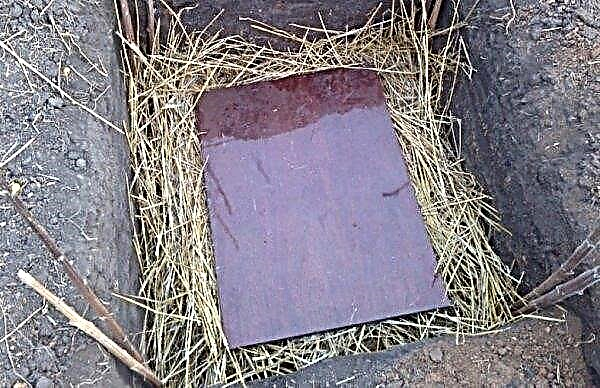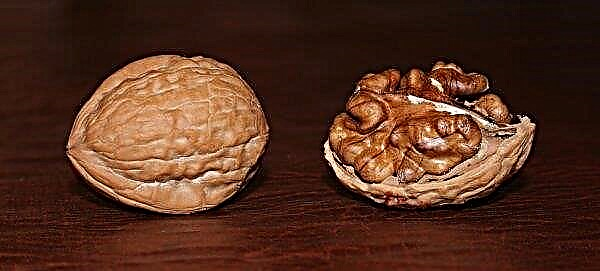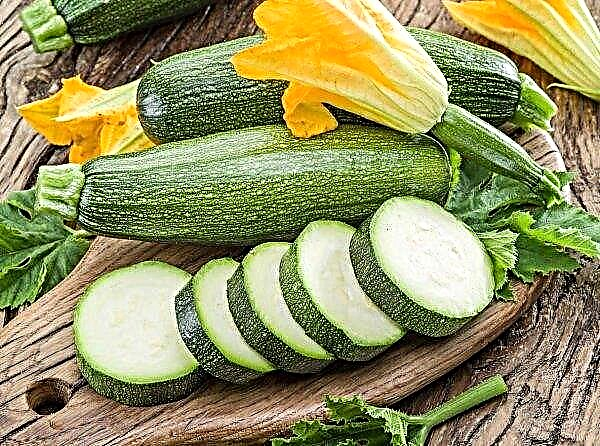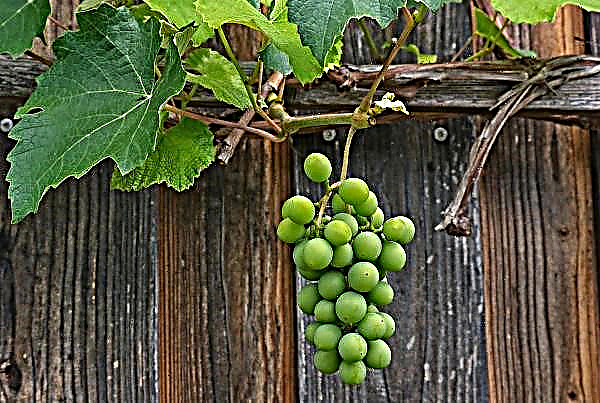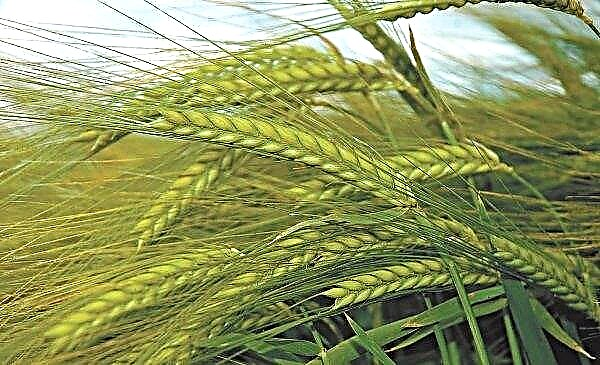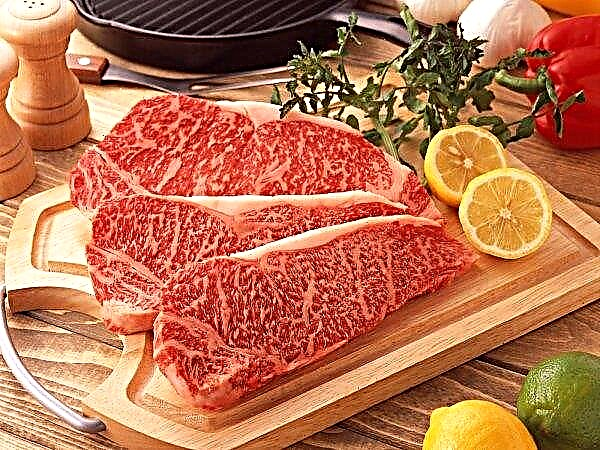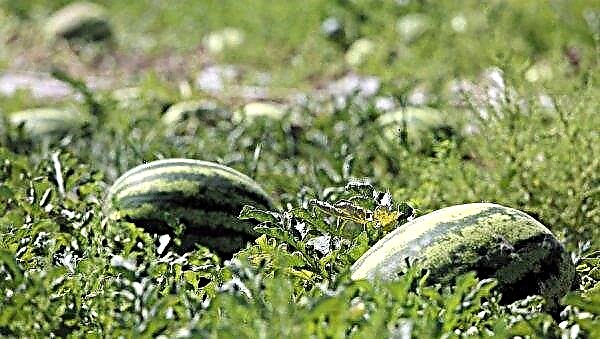Fir is an evergreen plant of the genus Pine. Increasingly, this tree can be found in landscape design, in parks, squares, on personal plots, in gardens, because there are a lot of varieties from high-growing to dwarf ones. One of the decorative varieties that many gardeners have come to love is Korean Fir Diamond (Abies koreana Brillant). In this article you can find information about this variety, a description of how to plant and grow it.
Botanical Description
Short description of Korean Diamond Fir:
- dwarf species, the height of an adult plant reaches about 60 cm, in diameter - up to 70 cm;
- krone - pillow-shaped, compact, grows slowly, annual growth is 3-4 cm;
- shoots - smooth, without cracks, gray-brown hue;
- needles - up to 2 cm long, thick, soft, fragrant, glossy, on top light green or dark green, on the back with two blue and white stripes, the edges are wrapped (not prickly);
- high frost resistance - up to –29 ° С;
- the root system is superficial;
- poorly tolerates drought and stagnation of water;
- perennial;
- the shrub grows well on fertile, moist, drained, slightly acidic soil;
- prefers a sunny place, but tolerates partial shade.
Did you know? There is a belief that the Trojan horse was made from Kefalini fir.
Landing
Korean Fir Diamond grows very slowly, adding about 3-4 cm per year, so for planting it is best to purchase well-developed seedlings of 5–7 years of age with a closed root system (in containers). Planting seedlings in the open ground is carried out in early spring or early autumn with an air temperature of about +10 ... + 15 ° C (this temperature regime allows the shrub to adapt well to climatic conditions).

When landing, you need to adhere to certain rules, and it is carried out in this way:
- You need to choose a sunny, sheltered from drafts and strong winds. The land should be with moderate humidity, well-drained, without close occurrence of groundwater. It needs to be dug, removed weeds with rhizomes, processed from pests and diseases.
- Dig a hole with a depth of 70–80 cm, in diameter - 50–60 cm. Make a drainage, for this you need to pour expanded clay, gravel or crushed stone at the bottom of the cavity, layer thickness - about 20 cm. After that add fertile soil with overripe manure or compost 15– 20 kg, nitroammophosco - 200–250 g, mix well, pour with water.
- Carefully remove the seedling from the container, lower it vertically together with a lump of earth into the hole (the root neck should be at ground level), sprinkle with soil, lightly compact, pour. When the liquid is absorbed, cover the trunk circle with mulch (hay, sawdust, shallow bark, straw, peat) with a layer of 5-8 cm.

Fir Care
In order to ensure the proper development of fir and to grow a healthy beautiful plant, it is necessary to carry out preventive work, water, mulch and loosen the soil, prune, feed the crop, protect it from diseases and pests.
Video: How to plant and care for fir
Watering and feeding
When growing Abies koreana Brilliant (Abies korean diamond) you need to monitor the soil moisture so that it does not dry out, because the root system is located superficially, and with insufficient moisture, the plant may stop growing, change the color of the needles or even die, therefore it is recommended that regular watering. For a young plant, 1 watering in 10 days (10 l) is enough, for an adult - 1 watering for two to three weeks.
Important! The frequency of watering depends on the weather conditions of the season. If it turned out to be hot and arid, it is best to water 1-2 times a week, while the soil needs to be loosened and mulched, and also to ensure that there is no stagnation of water (it is harmful to the roots, they can rot).
Also an important factor is feeding, which will help strengthen the plant. In spring, 100 g per 1 m² fertilizer “Kemira” is applied to the tree trunks by dispersion, followed by abundant watering of the soil for better absorption of nutrients. Mineral fertilizers are applied to the ground in the fall.

Loosening and mulching
Still important activities for the care of fir are considered loosening and mulching. After each watering, when the liquid is absorbed, a crust may form on the soil near the tree, which prevents the evaporation of excess moisture and air from entering the root system, so it must be loosened to a depth of no more than 10 cm so as not to damage the roots. Mulching helps preserve moisture in the earth on hot days, enriches it with nutrients and prevents the germination of weeds and grass, in winter protects against freezing of the soil.

Cropping and shaping
Sanitary pruning is necessary for better growth and formation.. It is carried out in spring or autumn, damaged and dry branches are removed. Special pruning is not required, because Korean Fir Diamond naturally has a beautiful spherical crown shape. To make it even more fluffy, you can pinch the tops of the shoots in early spring using a garden pruner.
Features of a tree transplant from one place to another
If you need to transplant a tree to another place, you need to adhere to the following scheme:
- 50-60 cm to retreat from the tree trunk, dig a deep ditch in diameter (this is necessary for digging fir and so as not to damage the root system).
- After carefully lifting the specimen together with the earthen lump, move it to the previously prepared pit (the pit preparation scheme described in the article above).
 If a long tree transportation is required for transplanting a dug tree, then its roots must be placed in a container or wrapped with cellophane, and the crown carefully tied so that the branches do not break
If a long tree transportation is required for transplanting a dug tree, then its roots must be placed in a container or wrapped with cellophane, and the crown carefully tied so that the branches do not break
Breeding
There are several ways to propagate Korean Diamond Fir, this can be cuttings or layering:
- For propagation by cuttings annual, well-woody branches with apical buds about 10 cm long will be needed. They should not be cut, but torn off before the sap flow and preferably along with the “heel”, the place of separation on the tree should be covered with a garden var. The shoots are placed in a container with fertile soil, compost and sand, covered with a jar or a cut plastic bottle, periodically they need to be watered, opened, ventilated. In winter, store in a cool place (basement). After 5-7 months, the root system will begin to form. A plant obtained from cuttings is planted in open ground only in the third year of life.
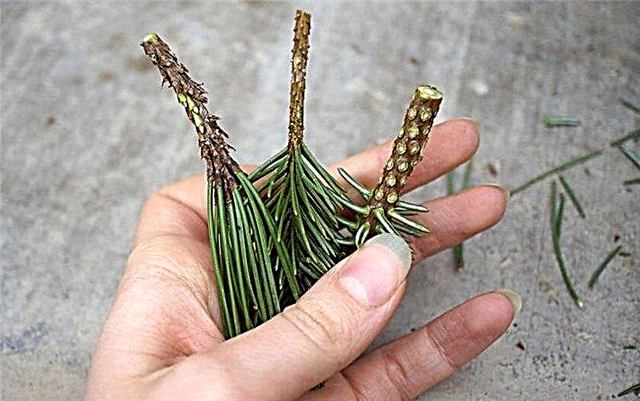 To stimulate root growth, watering cuttings and processes can be a solution of "Kornevin", "Radipharm" and others.
To stimulate root growth, watering cuttings and processes can be a solution of "Kornevin", "Radipharm" and others. - For propagation by layering young, strong branches need to be selected. In the spring, near the fir, dig a ditch 5 cm deep, bend the selected shoots to its bottom, press them with brackets or wire, sprinkle with soil, water, mulch humus, regular watering, weeds should be carried out throughout the season. After one or two years, the process can be separated and planted in a permanent place.
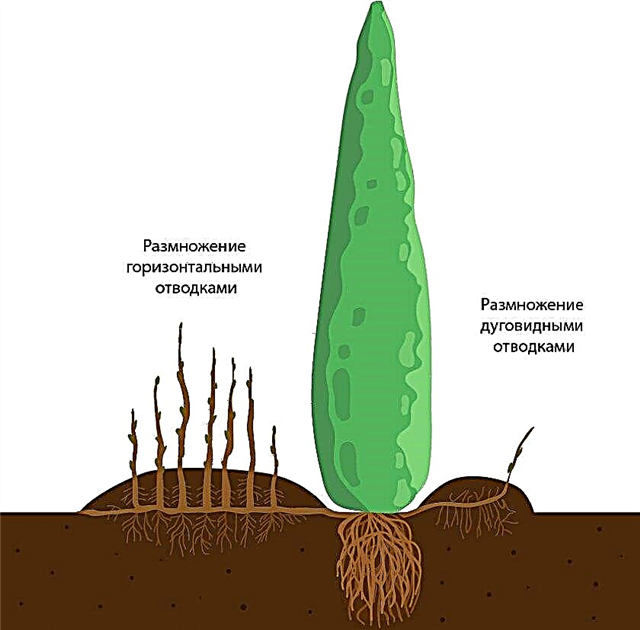
Wintering
Despite the fact that this type of fir is considered frost-resistant, it is better to cover young plants in the first few years after planting. For shelter you can use spruce, burlap, agrofibre. So that under the weight of the snow the branches do not break, you can put supports or arcs under the covering material. Before covering the shrub, first you need to water it abundantly, mulch the pericarp circle.
Did you know? Fir oil is made from fir branches, it is very useful for the human body. It is also used in perfumery and soap making, also used to produce camphor. But musical instruments are made from fir wood.
Possible diseases and pests
Like all plants, fir can be damaged by various diseases and pests, such as:
- Rust - a fungal disease, manifests itself in the form of orange-brown growths on the trunk, the needles turn yellow and fall off. At the first symptoms of the disease, it is necessary to remove the damaged parts, collect the fallen needles and burn everything, cover the cuts with garden varieties, and treat the plant with a 2% solution of copper sulfate, Tsineba, Nitrafen.
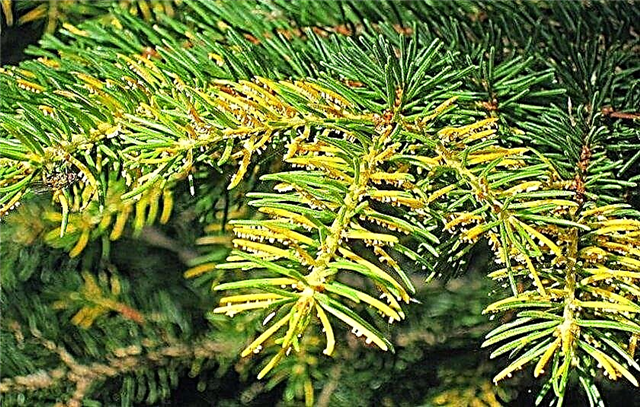
- Hermes fir (aphids) - a small insect, females of a yellowish hue, wingless, with long proboscis, lay eggs, from which aphids hatch. They feed on the juice of young shoots of the plant, the needles mutate, turn yellow, lose their decorative appearance. Gauls appear on the branches, in the middle of summer they burst, and aphids with wings come out of them. They hibernate at the base of the kidneys. Are carriers of disease. For destruction use drugs "Aktara", "Commander", "Rogor".
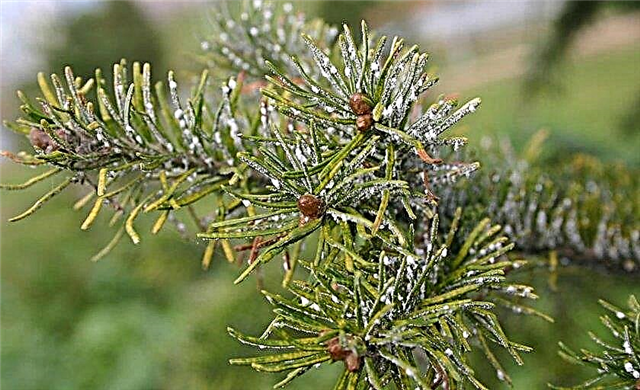
- Spider mite - the size is about 1 mm, wraps branches with a thin web, feeds on the juice of needles, it turns yellow and falls off. It also affects other cultures. You can deal with this pest with the help of the insecticides Actellik, Akarin, Fitoverm.
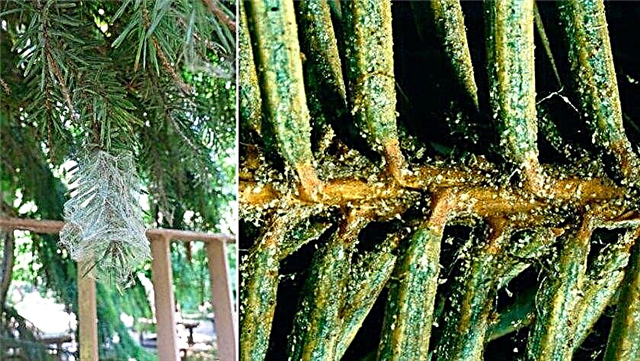
To protect a fir tree from pests, infections, it is necessary to carry out preventive work in a timely manner, remove fallen needles, cut dry, damaged branches, remove weeds, apply fertilizers and treat the plant with medicinal solutions.
The use of wood in landscape design
Korean Fir Diamond is considered an ornamental plant, so many designers use it for landscape gardening purposes, it looks beautiful in compositions with flowers, goes well with other coniferous, deciduous shrubs and trees. Planted in alpine hills, discounts, containers, flower beds, flower beds, groups, as a green fence.

Korean Fir Diamond has received good reviews from many gardeners, because with proper care, with very little effort, it becomes a worthy decoration of the homestead.

 To stimulate root growth, watering cuttings and processes can be a solution of "Kornevin", "Radipharm" and others.
To stimulate root growth, watering cuttings and processes can be a solution of "Kornevin", "Radipharm" and others.




